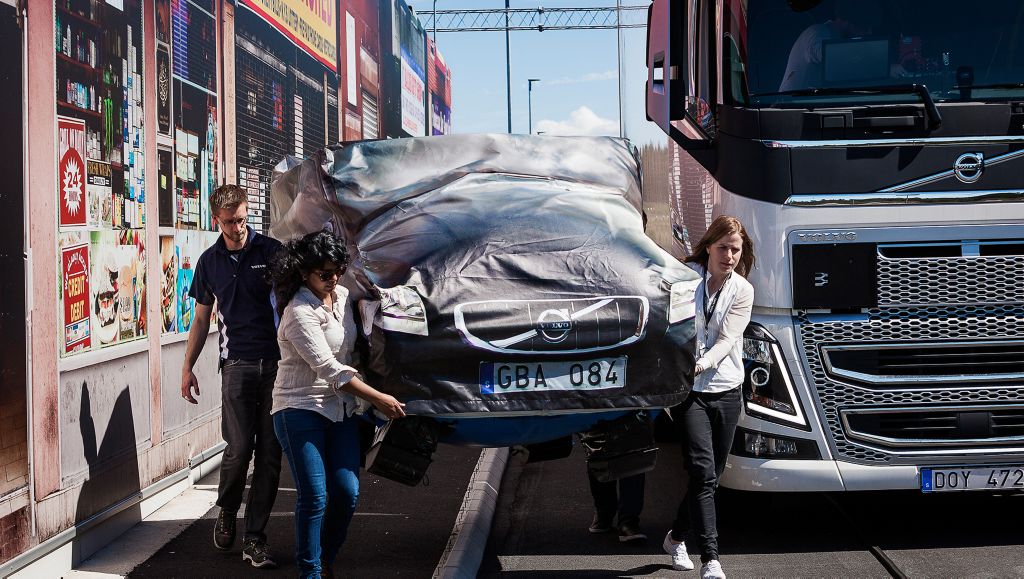High-precision testing with robots


A live test of Volvo Trucks’ active safety systems requires an awful lot of planning. The position, speed and trajectory of the vehicle must be just right for a successful result. Butthis can be difficult to achieve, especially when a moving truck needs to be synchronised with a moving target vehicle such as a balloon car.
Robots are now helping to make this process easier and more reliable. A team of engineers from Volvo Group has been developing a method to set up tests of active safety systems in a virtual environment and then carry them out using robotic controllers to steer, accelerate and brake the truck.
“With some expert test drivers, we can say ‘drive 10 cm to the left’ and, although perhaps a few drivers can achieve that, there are usually some inconsistencies,” says Vivetha Natterjee, Development Engineer, Vehicle Dynamics & Active Safety.
“The robot is much more accurate. It can perform a test over and overgain and we can adjust a specific drive path with centimetre precision.”
Since the robot-controlled tests on the track are carried out with exacting precision,the new system is better at determining the effect of each specific adjustment to a test.
“This new method allows us to get even more precise feedback, which is key to developing better and more complex active safety systems,” says Robert Laxing, Research Test Leader, Connected Vehicle & Infrastructure.
By refining test data through virtual simulations the team also hopes fewer tests need to be performed in the verification and validation phases during the development of new active safety functions.
“Since many test results can be verified in a virtual set-up, we avoid redundant tests on the track. Instead, our physical tests focus on situations where the direction or position of the crash target makes it difficult to accurately predict the result,” says Robert Laxing.
As a next step in the project, the team is working closely with suppliers to develop a robot-driven test platform that is robust enough to allow a truck to drive over it.
Today´s platforms are developed for cars and are not strong enough to take the eight-tonne axle weight of a truck.
“We are one of the first truck manufacturers working with automated testing in this way – which is why the hardware side hasn’t quite caught up,” says Anna Wrige Berling, Project Leader and Safety Coordinator, Vehicle Dynamics & Active Safety.
The project’s next challenge is expanding tests to include more complex traffic scenarios that include vulnerable road users such as cyclists and pedestrians.
“As more active safety systems and autonomous functions are developed in the future, we will need to be able to create very complex traffic scenarios on the test track,” says Anna Wrige Berling. “We expect that automated testing will be the key to verifying automated vehicle functions.”
The work of testing active safety systems with robotically-driven trucks started as part of Next Generation Testing Methods, research effort which included several industry stakeholders.
Since late 2014, the research has been developed in the A-TEAM project, a joint research project with Volvo Cars, Autoliv and AstaZero among others. Watch a test on the Trucks’ Anatomy web-series, featured on Volvo Trucks’ YouTube channel.
Some key advantages of robot-enable testing